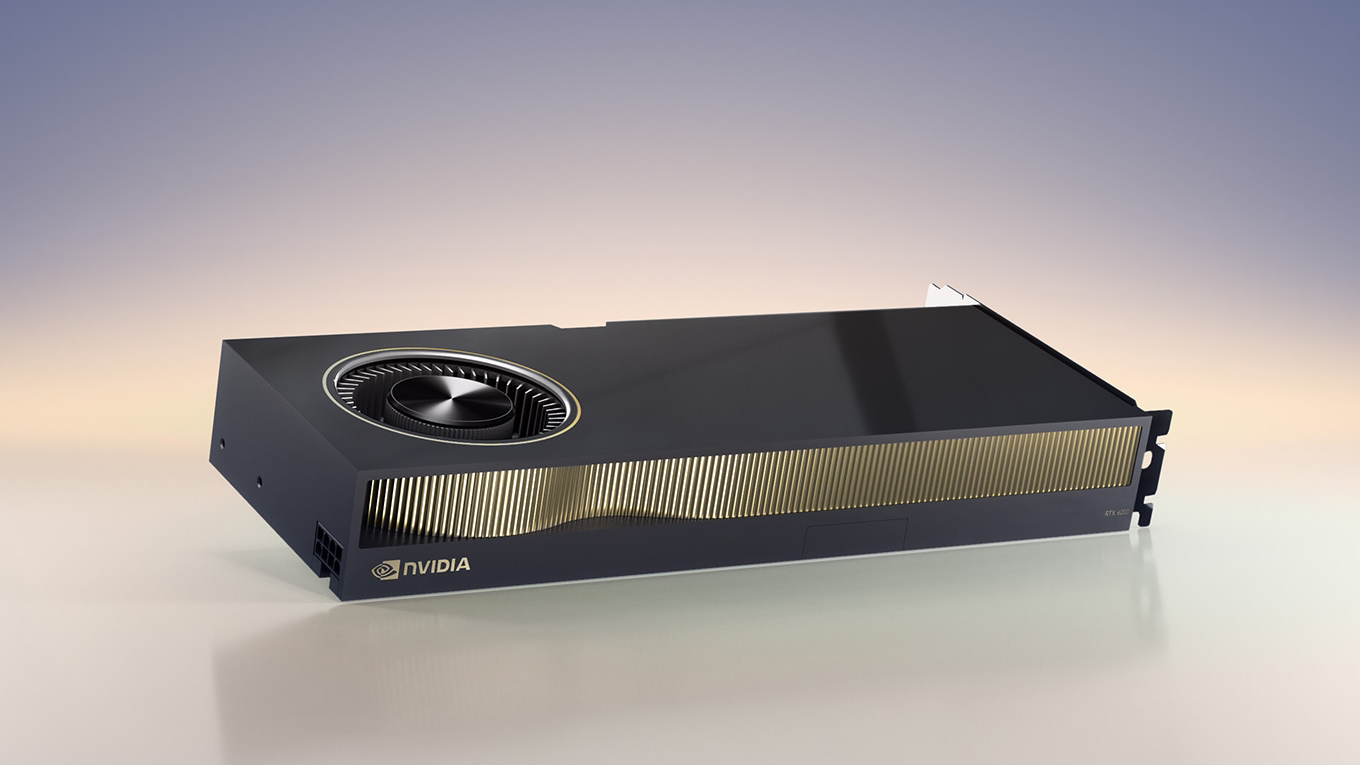
$1,599 RTX 4090 Beats $6,800 RTX 6000 Ada in Content Creation Review
Given its $6,800 price tag, you probably won’t see Nvidia RTX 6000 Ada on any lists of the best graphics cards for gaming. But no one can deny that the RTX 6000 Ada is a powerhouse for professional users and content creators. The RTX 6000 Ada Generation, as it’s officially known, features Nvidia’s flagship AD102 silicon, which the chipmaker also uses in the mainstream GeForce RTX 4090.
For the RTX 6000 Ada, Nvidia enabled 142 SMs out of the possible 144, so the graphics card is just two SM shy of using the full AD102 die. The RTX 6000 Ada arrives with 18,176 CUDA cores, 568 Tensor cores for AI workloads, and 142 RT cores for ray tracing tasks. With the potential to boost up to 2,505 MHz, the graphics card flaunts an impressive FP32 performance that tops out at 91.06 TFLOPs. There’s also 48GB of 20 Gbps GDDR6 memory onboard with a 384-bit memory interface to land the graphics card at a memory bandwidth of up to 960 GBps. Note that the TGP (Total Graphics Power) on the 6000 Ada is capped at 300W, however, compared to 450W for the RTX 4090 Founders Edition.
The previous RTX A6000 delivered 38.71 TFLOPs FP32 performance and 768 GBps of memory bandwidth. Therefore, the RTX 6000 Ada offers 135% higher FP32 performance and 25% more memory bandwidth than the RTX A6000. The GeForce RTX 4090, with 82.58 TFLOPs FP32 performance and 1,008 GBps memory bandwidth, is probably the closest rival to the RTX 6000 Ada.
While Nvidia has ported its Ada Lovelace architecture over to the company’s professional offerings, AMD has yet to release any professional-grade graphics card based on RDNA 3. The only competing product currently is the Radeon Pro W6800, dating back to the RDNA 2 days. Unfortunately, the Navi 21-based graphics card’s 17.82 TFLOPs FP32 performance and 512 GBps memory bandwidth look rather puny beside the RTX 6000 Ada. But let’s see what Puget’s benchmarks have to say.
RTX 6000 Ada Benchmarks
| Graphics Card | DaVinci Resolve Studio | Adobe Premiere Pro | Topaz AI Suite | Unreal Engine | V-Ray | OctaneRender | Redshift | Blender |
|---|---|---|---|---|---|---|---|---|
| RTX 6000 Ada | 2,975 | 1,498 | 471.2 | 74.0 | 5,399 | 1,146 | 87 | 12,728 |
| GeForce RTX 4090 | 2,960 | 1,505 | 465.5 | 92.5 | 5,564 | 1,292 | 85 | 12,779 |
| RTX A6000 | 2,648 | 1,379 | 445.2 | 46.3 | 2,710 | 627 | 159 | 5,848 |
| Radeon Pro W6800 | 2,135 | 1,017 | 401.6 | 24.7 | N/A | N/A | N/A | 1,982 |
According to Puget Systems’ thorough review (opens in new tab) of the RTX 6000 Ada, professional users can expect up to 2X higher performance from the Ada-powered graphics card compared to its Ampere predecessor. Of course, reducing workload times in half is always a welcome improvement. The results didn’t come as a total surprise since the RTX 6000 Ada specifications insinuate as much, but it’s still good to have benchmarks that quantify performance.
The GeForce RTX 4090 was superior to the RTX 6000 Ada, outperforming its professional counterpart in six out of eight benchmarks. The GeForce RTX 4090 delivered between 3% to 25% higher performance. The Radeon Pro W6800 wasn’t a match for the RTX 6000 Ada, as expected. The latter was about 17% to 542% faster than the former, depending on the workload.
It’s beyond dispute that the RTX 6000 Ada is a solid option for professional workloads. Unfortunately, the eye-watering $6,800 MSRP is enough to scare off potential buyers, even if the graphics card will likely pay off in the long run. Note also that none of the above benchmarks benefit from Nvidia’s professional drivers — Siemens NX for example typically sees massive performance gains compared to GeForce cards.
The GeForce RTX 4090 is an attractive alternative for the less serious user since it starts at $1,650. You lose the stability and software validation you get from the Nvidia professional drivers and 24GB of VRAM. However, if you don’t need a blower GPU and use applications that aren’t specifically de-optimized by Nvidia’s GeForce drivers, the RTX 4090 ($1,599 MSRP) can lend you its firepower for 76% less than the cost of an RTX 6000 Ada. Little wonder Nvidia doesn’t seem to want more compact blower variants of the RTX 4090.

